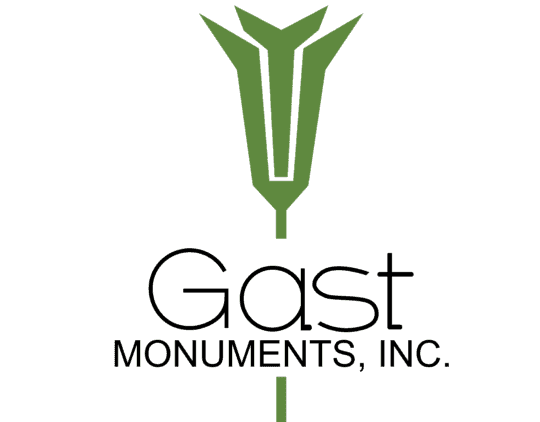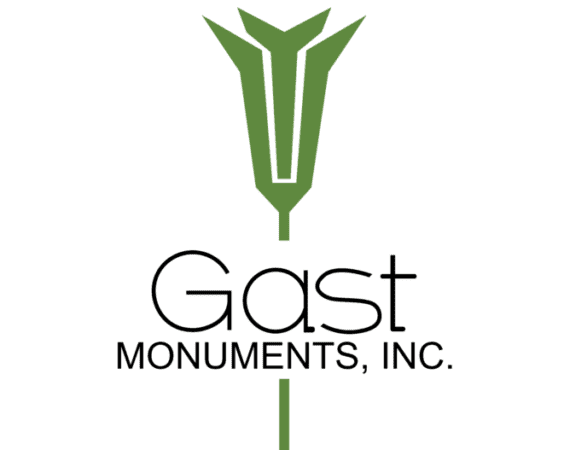Mound Grove Cemetery, Kankakee
Location
1000 N Greenwood Ave, Kankakee, IL 60901
Open Daily 8:00 a.m. to Sunset
About Mound Grove Cemetery, Kankakee
On January 5, 1854, the plot for the original town of Kankakee was filed with the County Recorder, and with it, the transfer of the city lots and the growth of the community began. Among the early lot purchasers of Kankakee was one Clark R. Strong who purchased the first lot on Dearborn Avenue south of Court Street.
This family, unfortunately, suffered the loss of three of its members, all of whom, in the absence of a public burial ground, were interred upon the back of the family lot in a spot where the Volkmann Building once stood.
The need for a public burial ground soon became apparent and to fill this need, in 1858, Mound Grove Cemetery was established, making it the first and oldest public service in Kankakee. It was the private venture of the Associates Land Company and continued as such for a number of years.
Ava Bartlett was the first sexton of Mound Grove Cemetery, serving from 1858 until 1869.
George Tyler was Sexton from 1869 until 1882. He died October 16, 1916, and is buried in Lot 10 of Section 3.
Certain business leaders in Kankakee City felt that the cemetery was so closely allied with the religious life of the city that it should be maintained for the benefit of the entire community and not for the personal profit of any individual or group.
The taking of pledges (passing the hat) assured the financial support necessary to take the cemetery out of private hands, so that on February 23, 1879, Mr. James McGrew took title to the property. At the same time, Mr. William G. Swannell, Emory Cobb, George V. Huling, R. J. Hanna, J. S. Taylor, Wesley Bonfield, Stephen R. Moore, and Hiram Bailey filed an application for a corporate charter with the Secretary of State.
On July 21, 1879, a corporate charter was granted to the Mound Grove Cemetery Association of Kankakee City as a non-profit corporation with perpetual life. Under the charter no profits can be paid to any individual or group, nor can fees or compensation be paid to officers or directors. Any money remaining after the operating expenses are paid is held for the protection and development of the cemetery.
The original pledges totaled $1000. This paid the purchase price of the property. As additional funds were needed for surveying, platting, laying out of sections, providing roads and the fencing of the grounds, the hat was again passed, and additional pledges secured. In all, a total of 80 citizens pledged and paid, in amounts ranging from $5 to $230 a total of $2600. This was the total sum required to start Mound Grove Cemetery.
With the election of officers and directors, the organization of the corporation was completed on July 1, 1882. Mr. William G. Swannell, one of the incorporators, was elected as the first president. Mr. Stephen Moore was elected the first Secretary. The first directors were Dr. R. S. Dewey, Lemuel Milk, Emory Cobb, Hiram Bailey, Warren R. Hickox, Sr., and George V. Huling.
Abraham Plant was Superintendent from 1882 until 1900. The following resolution is taken from the minute book of the Corporation:
- RESOLVED that we hire Mr. A. Plant from March 15, 1884, to March 1, 1885, and allow him $30 per month and house rent and garden spot, also the grass that may be cut on the grounds at such times as the association may direct. In consideration of which he is to give his full time and the use of his team and tools as may be directed by the association. In case of loss of time from sickness or other causes, he is to furnish a man in his place.
Mr. Plant died December 19, 1914, and is buried in Lot 25, Section 12.
His son, Arthur H. Plant, was superintendent for 36 years from 1900 until 1936. He died at the age of 69 on December 6, 1938, and is buried on Lot 110, Section 8.
In 1909, private families purchased lots from the Mound Grove Cemetery Association for the purpose of building a community mausoleum. The building was completed in January 1910. The first entombment was that of Rev. S. V. Williams who had died April 29, 1909. His body had been held in the receiving vault until the building was completed.
The Mausoleum contained 544 crypts of which 242 were sold by the Kankakee Mausoleum Company. Mound Grove Cemetery Association was paid a small annual fee for the cleaning of the building and keeping records of entombments. The entombment charge went to Mound Grove Cemetery.
In 1936 with the death of Charles F. Whitmore, who had been secretary of the association since 1882, and the retirement of Arthur H. Plant, the Board of Directors voted to combine the office of secretary and superintendent. Charles H. Bass was elected Secretary-Superintendent in 1936 and served until 1954. He died April 17, 1971, at the age of 85, and is interred on Lot 112, Section 8.
On November 30, 1944 the Kankakee Mausoleum sold all unused crypts to the Mound Grove Cemetery Association for $2000. Mound Grove Cemetery sold 13 crypts. In 1944 when Mound Grove took over the Mausoleum, the building was already showing signs of age and neglect. It was hoped enough crypts could be sold to bring in enough money to repair the Mausoleum. There just wasn’t enough interest in the crypts.
Paul E. Peffer was elected Secretary-Manager of Mound Grove Cemetery in 1954 and served until September 1, 1980, when he and his wife, Ruth, retired to Sun City, Arizona.
On March 20, 1968, the final court decree was signed giving Mound Grove permission to remove all remaining entombments from the Mausoleum to another area of the cemetery and then tear down the building.
On June 3, 1968, the Secretary of State gave permission to change the name of Mound Grove Cemetery to Mound Grove Gardens of Memory, Inc.
Plans for the new chapel Mausoleum began in August 1974. Groundbreaking for the new building was held on November 15, 1976. The first entombment was on December 13, 1977, of Cynthia Cox. Four deaths occurred before the Mausoleum was completed in 1977 and were temporarily entombed at Woodlawn Memorial Park, Joliet, Illinois.
Kenneth L. Moore was elected Secretary-Manager of Mound Grove Gardens of Memory in 1980 and served until 1994.
A walk through Mound Grove is like a walk through history, the History of Kankakee – Warren Hickox, lawyer and owner of a title and abstract business and former treasurer of Mound Grove – Thomas P. Bonfield, attorney, and Kankakee’s first mayor – A. G. Hobbie after whom Hobbie Avenue is named – George V. Huling, who bought and sold literally hundreds of thousands of acres of land – William Frith, operator of a hardware store – Daniel Paddock, a lawyer who served several terms in the Illinois legislature and was State’s Attorney – Richard J. Hanna, local merchant, postmaster and a major in the Civil War – Algy Dean who owned the grist mill near the dam on the Kankakee River – Len Small, governor of Illinois – Ruth LeVasseur, wife of Noel LeVasseur – Lemuel Milk, famous landowner in Kankakee and Iroquois Counties and former president of Mound Grove – Capt. William Gougar, famous for his steamboats the Minnie Lillie, the Modoc, and the Margaret – F. D. Radeke, owner of the brewery and ice house.
The list could go on and on with names like – Ehrich, Beckman, Denny, McCulloh, Todd, Knecht, Whipple, Mateer, Swannell, Sizer, Kenaga, Kerr, and Savloie. Not only the famous but also the average citizen.
There are over 18,000 recorded burials in Mound Grove. Before the Mound Grove Cemetery Association was formed in 1882, records of burials were not kept. Families and friends usually made the burials. The only record of these early burials are the tombstones.

